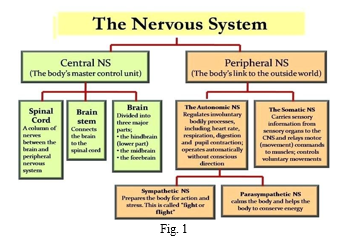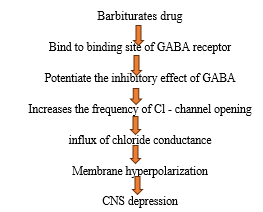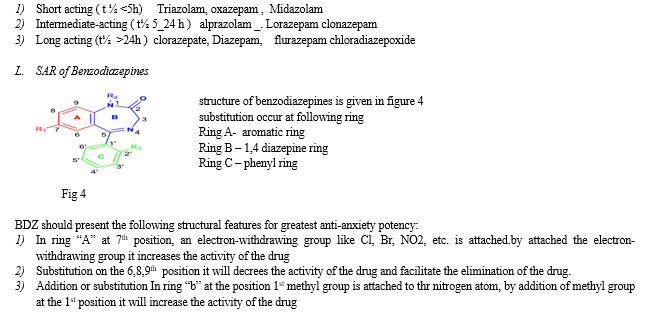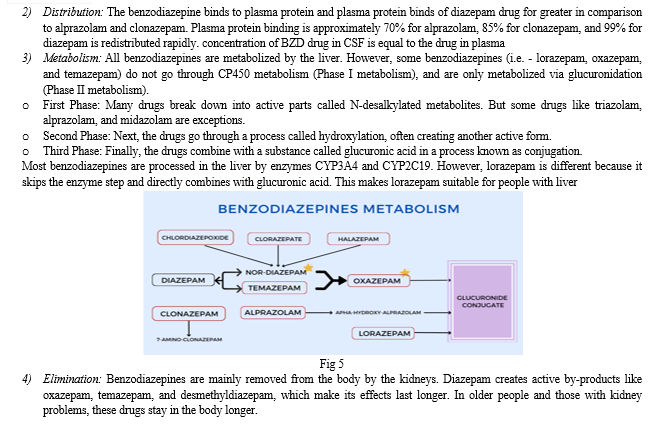Ijraset Journal For Research in Applied Science and Engineering Technology
- Home / Ijraset
- On This Page
- Abstract
- Introduction
- Conclusion
- References
- Copyright
A Systematic Review on Sedative and Hypnotics
Authors: Ganesh Anil Vitukade, Monika Niranjan Pawar, Abhishek Suryawanshi, Beautykumari Singh, Abhijit Shinde
DOI Link: https://doi.org/10.22214/ijraset.2024.63593
Certificate: View Certificate
Abstract
Sedative and hypnotic drugs are central nervous system depressants primarily used to induce calmness, reduce anxiety, and promote sleep. These medications include benzodiazepines, barbiturates, and various non-benzodiazepine sleep aids, each varying in their mechanism of action, efficacy, and safety profiles. Benzodiazepines, such as diazepam and alprazolam, enhance the effect of the neurotransmitter gamma-aminobutyric acid (GABA) at the GABA-A receptor, resulting in sedative, anxiolytic, muscle relaxant, and anticonvulsant effects. They are commonly prescribed for anxiety disorders, insomnia, seizures, and muscle spasms. However, their use is associated with risks of tolerance, dependence, and withdrawal symptoms. Barbiturates, such as phenobarbital, were once widely used for their sedative and hypnotic properties but have largely been replaced by benzodiazepines and other safer alternatives due to their higher risk of overdose and dependence. Barbiturates enhance GABAergic transmission but also directly activate GABA receptors, leading to more profound central nervous system depression. Non-benzodiazepine sleep aids, including drugs like zolpidem, eszopiclone, and zaleplon, act on the benzodiazepine receptor site but have a different chemical structure. These drugs are often preferred for short-term treatment of insomnia due to their relatively lower risk of dependence and adverse effects compared to benzodiazepines. The pharmacokinetics of sedative and hypnotic drugs can be significantly influenced by patient-specific factors, including age, liver function, and concurrent use of other medications. For example, the metabolism of benzodiazepines can be inhibited by selective serotonin reuptake inhibitors (SSRIs) and certain antiulcer drugs, potentially leading to increased drug levels and heightened sedative effects. Additionally, enzyme-inducing antiepileptic drugs can accelerate the metabolism of these sedatives, reducing their efficacy.
Introduction
I. CENTRAL NERVOUS SYSTEM
The nervous system is an intricate network that allows an organism to interact with its environment. Its functions are diverse, including signal circuits that facilitate thinking, language, emotions, learning, memory, and sensation.
The nervous system uses various neurotransmitters at different synapses, neuroeffector sites, and neuromuscular junctions. Examples include acetylcholine, norepinephrine, dopamine, serotonin, glutamate, gamma-aminobutyric acid (GABA), neuropeptides, hormones, and even nitric oxide.
Designing and developing drugs that can cross the blood-brain barrier (BBB) and target specific sites within the central nervous system (CNS) is a challenging and complex endeavours. Central Nervous system it is type of nervous system and the classification of nervous system is give as follows in fig.1
A. Classification

II. SEDATIVES AND HYPNOTICS
Sedative and hypnotics both act on central nervous system. Sedative and hypnotic drugs reduce anxiety and produce a calming effect by inducing and maintaining sleep. These drugs are extensively used to treat various psychiatric disorders, including anxiety and insomnia. However, continuous use of currently available sedative-hypnotic therapies can lead to serious side effects, such as respiratory, digestive, and immune system dysfunctions, as well as deterioration of cognitive function, physical dependence, and tolerance.Most commonly sedative and hypnotics are use in the treatment of insomnia, which can also impair the vigilance of the psycho motor, but raise safety concerns.
- Sedative: Sedative is a drug that reduces excitement and calms the brain without inducing sleep, though drowsiness may be produced.
- Hypnotic: Hypnotic is a drug that induces and/or maintains sleep, similar to normal arousable sleep.
The sedatives and hypnotics are more or less CNS depressants with somewhat differing time action and dose-action relationships. Hypnotics given in high doses can produce general anaesthesia. Thus, sedation—hypnosis—general anaesthesia may be regarded as increasing grades of CNS depression. Anxiety is a feeling of fear, confusion, or tension that arises from the expectation of an imagined or unreal threat. The most common drugs used to treat anxiety are benzodiazepines.
A. Classification
- Barbiturate – e.g. – barbital, phenobarbital, secobarbital, pentobarbital
- Benzodiazepines-e.g.- diazepam, chlorzepoxide,
- Miscellaneous- e.g.- glutethimide
B. Barbiturates
Barbiturates are derivatives of barbituric acid (malonyl urea) that have been modified. Barbituric acid itself isn't a hypnotic, but when alkyl or aryl groups are added to its C5 position, the resulting compounds become hypnotics. If the oxygen at the C2 position is replaced with sulphur, it produces thiobarbiturates, which are more lipid-soluble and thus more potent. Barbiturates have different levels of lipid solubility: the more soluble they are, the more potent they are (effective in smaller doses) and the shorter their duration of action. Barbiturates do not dissolve in water, but their sodium salts do, creating a highly alkaline solution.Various indications given by barbiturates over the past 120 years , including insomnia, psychiatric disorders, anaesthesia, alcohol withdrawal, seizures, and elevated intracranial pressure.
III. CLASSIFICATION OF BARBITURATES
Based on duration of action:
Ultrashort acting (15min) e.g. - Thiopental
Short acting (2-4 hrs) e.g.- pentobarbital
Intermediate acting (4-6 hrs) e.g.-amobarbital
Long acting (6-8 hrs ) e.g. - phenobarbital
A. Mechanism of action


IV. PHARMACOKINETICS
A. Absorption
- Phenobarbital: It's quickly absorbed, reaching peak concentration in 2 to 4 hours. In adults, about 90% of the dose is absorbed, but this is lower in newborns.
- Methohexitone: Its plasma levels were studied in children aged 2-7 years after rectal and intramuscular administration, and in younger children after intravenous injection.
B. Distribution
- Thiopentone: It rapidly distributes into tissues. For volunteers, it has a distribution half-life (α) of about 2.8 minutes and (β) half-life of about 48.7 minutes.
C. Metabolism
- Methohexitone: Primarily metabolized in the liver, with less than 1% excreted unchanged in urine.
- Phenobarbital: Metabolism is slow, resulting in stable concentrations with steady dosing. Around 20-40% is excreted unchanged in urine, while the remainder undergoes slow liver metabolism.
D. Elimination
- Phenobarbital: Approximately 25% is excreted unchanged in urine. Its renal excretion can be enhanced through methods like osmotic diuresis or urine alkalinization.
- Other Barbiturates: Except for phenobarbital, most barbiturates are extensively metabolized rather than excreted unchanged in urine. Inchildren , a shorter half time duration occurs due to increased clearance The half-life of phenobarbital decreases by approximately 4.6 hours/day on long term administration.
E. Pharmacodynamics
Barbiturates are drugs that affect the brain and nervous system, causing sedation, hypnosis (sleepiness), and even anaesthesia.
F. How Barbiturates Work
GABA Receptor Activation: Barbiturates attach to GABA receptors in the brain. GABA is a neurotransmitter that calms neural activity.
Increased Chloride Conductance: This attachment allows chloride ions to enter neurons more easily. This process hyperpolarizes neurons, making them less likely to fire signals.
Glutamate Inhibition: Barbiturates also reduce the release of glutamate, which is an excitatory neurotransmitter.
Effects on Other Neurotransmitters: They can influence dopamine, serotonin, and acetylcholine systems in the brain.
G. Pharmacological Action
Barbiturates act primarily by enhancing the inhibitory effects of the neurotransmitter gamma-aminobutyric acid (GABA) at the GABA-A receptor. Here's a breakdown of their pharmacological actions:
- GABA-A Receptor Modulation: Barbiturates bind to specific sites on the GABA-A receptor complex, which is a ligand-gated chloride ion channel. This binding increases the duration of GABA-mediated chloride channel openings, leading to membrane hyperpolarization and inhibition of neuronal excitability.
- Central Nervous System Depression: By enhancing GABAergic neurotransmission, barbiturates produce sedative, hypnotic, and anesthetic effects. These effects are dose-dependent, ranging from mild sedation to profound anesthesia.
- Anticonvulsant Properties: Barbiturates can suppress seizure activity by increasing the threshold for neuronal firing and reducing the spread of epileptic discharges.
- Muscle Relaxation: They exert a direct depressant effect on the spinal cord, resulting in relaxation of skeletal muscles.
- Respiratory Depression: High doses of barbiturates can depress the respiratory center in the brainstem, leading to decreased respiratory rate and potentially respiratory arrest.
- Cardiovascular Effects: Barbiturates can cause vasodilation and decrease cardiac output, particularly at higher doses.
H. Adverse Effects
- Respiratory Depression: They can slow breathing, which can be dangerous.
- Dependence and Addiction: They can lead to physical and psychological addiction.
- Cognitive Impairment: They may affect thinking and memory.
- Overdose Risk: Taking too much can be fatal.
Barbiturates are now less commonly used due to their potential for abuse and safer alternatives being available.
I. Pharmacokinetics Interaction
The binding of thiopentone to albumin is decreased in the elderly, resulting in higher free drug concentrations in older patients. In older adults, the binding of thiopentone to albumin is reduced, leading to higher levels of the free drug. Enzyme-inducing antiepileptic drugs (AEDs) like carbamazepine, phenytoin, phenobarbital, and primidone enhance the activity of various cytochrome P450 enzymes (CYP1A2, CYP2C9, CYP2C19, and CYP3A4), glucuronyl transferases (GT), and epoxide hydrolase, which speeds up the metabolism of other drugs.
J. Drug-Drug Interaction of Barbiturates
By taking systemic hormonal contraception drug causes contraceptive failure Barbiturates are restricted for pregnant and lactating women because abnormal development of fetus.When barbiturates are combined with other CNS depressants, such as benzodiazepines and opioids, they can cause oversedation and severe respiratory depression.Barbiturates should not be given with alcohol, alcohol increases the risk of overdose.
K. Benzodiazepines
Introduction
Benzodiazepines were first introduced into medical practice in the 1960s and quickly became widely used. The first benzodiazepine synthesized was chlordiazepoxide in 1957. These medications primarily treat anxiety disorders but can also serve as anesthetics in rare cases of severe conditions. Benzodiazepines act on specific receptors in the central nervous system, known as benzodiazepine receptors. Examples of benzodiazepines approved by the FDA include alprazolam, clobazam, chlordiazepoxide, and others.
They are among the most prescribed medications due to their effectiveness in alleviating anxiety and inducing relaxation. However, their use requires caution due to potential side effects and the risk of dependence if used long-term or in high doses.
Classification



N. Pharmacodynamics
Benzodiazepines (BZDs) enhance the function of a specific receptor in the brain known as the GABA-A receptor. This receptor is a type of protein complex that acts as a gateway for chloride ions when activated by the neurotransmitter GABA (gamma amino butyric acid). GABA is widespread in the brain and plays a crucial role in calming neuronal activity by reducing excitability.
The GABA-A receptor consists of five subunits made up of different proteins. It typically includes two α subunits, two β subunits, and one γ subunit. Each receptor complex has two binding sites for GABA but only one for benzodiazepines, located where the α and γ subunits meet. Specifically, certain α subunit isoforms (variants) contain a histidine residue that binds strongly to benzodiazepines, while others do not interact with these drugs.
When benzodiazepines bind to their specific site on the GABA-A receptor, they cause a change in the receptor's shape. This alteration enhances the ability of GABA to bind to its own sites on the receptor. As a result, the chloride channel opened by the receptor allows more chloride ions to enter the neuron, leading to hyperpolarization. This process ultimately enhances the inhibitory effect of GABA throughout the central nervous system, producing a calming or sedative effect.
V. PHARMACOLOGICAL ACTION
Benzodiazepines (BZDs) exert their pharmacological actions primarily through interaction with the gamma-aminobutyric acid type A (GABA-A) receptor in the central nervous system. Here’s a breakdown of their key pharmacological actions.
- Anxiolytic Effects: Benzodiazepines are effective in reducing anxiety by enhancing GABAergic neurotransmission in key brain regions involved in anxiety regulation
- Sedative and Hypnotic Effects: Benzodiazepines induce sedation and sleepiness by modulating GABAergic neurotransmission in the reticular activating system.
- Muscle Relaxant Properties: Benzodiazepines reduce muscle tone and spasticity by enhancing GABA-mediated inhibition in the spinal cord and brainstem.
- Anticonvulsant Effects: Benzodiazepines prevent seizures by increasing GABAergic inhibition, thereby reducing neuronal excitability.
- Amnesic Effects: Benzodiazepines can cause anterograde and retrograde amnesia, affecting memory formation and retrieval processes.
- Tolerance and Dependence: Long-term use of benzodiazepines can lead to tolerance, requiring higher doses for the same effect, and dependence, with withdrawal symptoms upon discontinuation.
- Withdrawal Syndrome: Abrupt cessation of benzodiazepines can lead to a withdrawal syndrome characterized by anxiety, insomnia, and potentially severe symptoms
- Clinical Applications: Benzodiazepines are used clinically for various conditions including anxiety disorders, insomnia, acute seizures, and as adjuncts in anesthesia.
- Pharmacokinetics and Metabolism: Understanding the pharmacokinetics and metabolism of benzodiazepines is essential for optimizing their clinical use and minimizing adverse effects.
A. Adverse Effects of Benzodiazepines
- Sedation and Drowsiness: Benzodiazepines often make people feel sleepy and sluggish, which can make it hard to function normally or move well.
- Cognitive Impairment: They can cause confusion, make it difficult to remember things, and make it hard to focus, especially in older people.
- Respiratory Depression: Taking high doses or using benzodiazepines with other drugs that slow down the brain can slow breathing, which can be dangerous.
- Physical Dependence and Withdrawal: Using benzodiazepines for a long time can make the body dependent on them. Stopping suddenly or reducing the dose quickly can lead to symptoms like anxiety, trouble sleeping, shaking, and even seizures.
- Impaired Coordination: Benzodiazepines can make it harder to move smoothly, coordinate actions, and react quickly, which increases the risk of accidents.
- Paradoxical Reactions: In some people, rather than calming them down, benzodiazepines can cause unexpected reactions like feeling agitated, aggressive, or losing inhibitions.
- Drug Interactions: Benzodiazepines can interact with other medications, especially those that also affect the brain, leading to stronger effects or more side effects
B. Pharmacokinetic Interaction of Benzodiazepines
When opioids, such as oxycodone, are used together, there is a higher risk of side effects. Additionally, it's important to be aware of potential interactions that could affect how the drugs are processed in the body. When taking antidepressants like selective serotonin reuptake inhibitors (SSRIs), such as fluoxetine and fluvoxamine, they can slow down the breakdown of some benzodiazepines, like alprazolam and diazepam. This can result in higher levels of benzodiazepines in the body.
Antiulcer drugs: Cimetidine, an H2 blocker, can slow down the metabolism of benzodiazepines like diazepam and chlordiazepoxide. This can cause their levels to rise in the body, potentially leading to increased side effects.
Other benzodiazepines: Taking multiple benzodiazepines together, such as midazolam with others, can lead to pharmacokinetic interactions, potentially affecting how these drugs are processed in the body.
C. Miscellaneous Agents
Miscellaneous drugs of Sedatives and hypnotics are those which are not categorized in Benzodiazepines and Barbiturates.
Miscellaneous Drugs are classified as:
- Alcohols
- Amides
- Aldehydes
- Alcohols are Further Classified Into
a. Meprobromate.
b. Ethchlorvynol.
2. Amides are Further Classified Into
a. Glutethmide.
3. Aldehydes are Further Classified Into
a. Paraldehyde.
b. Trichlofos sodium.
D. Mechanism of Action
The main mechanism of action of these miscellaneous drugs is that it binds to GABA ‘A’ receptor. After this binding it causes opening of chlorine ion channels which leads to chlorine influx.
This leads to CNS depression which causes sedation.
E. Pharmacokinetics
Glutethimide is unpredictably absorbed from the gastrointestinal tract, but peak serum concentrations generally occur within 1–6 hours following a therapeutic dose. Liver metabolizes glutethimide to form conjugated and unconjugated metabolites.
F. Pharmacodynamics
Glutethimide is like the barbiturates and is a hypnotic and sedative drug. It was introduced in 1954 as a safer alternative to barbiturates but was soon found out that it causes addiction and withdrawal symptoms.
G. Therapeutic Uses
- Glutethimide: This induces sleep without respiratory depression.
- Meprobromate: This is used as a skeletal muscle relaxant and a sedative and hypnotic.
- Ethchlorvynol: This drug is used to manage insomnia. It is a short duration hypnotic.
- Paraldehyde: Paraldehyde is used in the treatment of seizures and acts as an anticonvulsant.
- Trichlofos Sodium: This drug is used as a sedative and hypnotic. This drug does not cause gastric irritation.
Conclusion
By the above article, it can be concluded that sedatives and Hypnotics provide varied medicinal values and enhance the medical procedures by inducing sedation / calming effect. while sedative and hypnotic drugs play a crucial role in managing anxiety, insomnia, and related disorders, their use must be carefully monitored to minimize risks of adverse effects, tolerance, and dependence. Further research and development of these medications continue to focus on enhancing their safety and efficacy profiles. Sedatives and Hypnotics Drugs Are Immensely useful but the overdose factor should be taken care of as A Overdose of Sedatives and Hypnotics may lead to serious problems such as respiratory depression and can also be responsible for death.
References
[1] Textbook of Medicinal Chemistry 1 by PV publication. Parker E. Ludwig , Vamsi Reddy , Matthew Varacallo Neuroanatomy, Central Nervous System (CNS) StatPearls Publishing; 2024 Jan. 2022 Oct 10. [2] Harvey AM, Macintosh FC. Calcium and synaptic transmission in a sympathetic ganglion. J Physiol. 1940 Jan 15;97(3):408-16. [3] Palmer AM, Alavijeh MS: Translational CNS medicines research Drug discov today,. 2012;17(19–20):1068–1078 10.1016/j.drudis.2012.05.001 [4] Md. Moniruzzaman, Md. Atikur Rahman, and Afia Ferdous , Evaluation of Sedative and Hypnotic Activity of Ethanolic Extract of Scoparia dulcis Linn. Published online 2015 Mar 12 [5] Katzung B. G., Masters S. B., Trevor A. J Basic and clinical pharmacology. 11th. New York, NY, USA: McGraw-Hill; 2009. [6] Dhawan K., Dhawan S., Chhabra S. Attenuation of benzodiazepine dependence in mice by a tri-substituted benzoflavone moiety of Passiflora incarnate Linneaus: a non-habit-forming anxiolytic. Journal of pharmacy and Pharmaceutical sciences. 2003;6(2):215–222. [7] Sedative And Sedative-Hypnotic Drugs ,https://www.encyclopedia.com/ [8] De Gage SB, Bégaud B, Bazin F, Verdoux H, Dartigues JF, Pérès K, Kurth T, Pariente A. Benzodiazepine use and risk of dementia: prospective population-based study. Bmj. 345, 2012, e6231 [9] Rang HP, Dale MM, Ritter JM, Roore PK, Pharmacology 6th edition. Philadelphia: Churchill Livingstone:2007. [10] Tripathi, K. D. Essentials of medical pharmacology. 6th ed. New Delhi: Jaypee Brothers Medical Publishers(P) LTD. 2008. Pg no. 398 [11] Coupey SM. Barbiturates. Pediatr Rev. 1997 Aug;18(8):260-4; quiz 265. [12] Wilson and Gisvold’s Textbook of ORGANIC MEDICINAL AND PHARMACEUTICAL CHEMISTRY TWELFTH EDITION PAGE NO. 553-554. [13] Thakur Publication pvt.ltd.lucknow.Medicinal chemistry 1 b pharm sem. 4th according to syllabus based on PCI prof.DR.R.D.Gupta , DR.santosh.R.kirtane ,DR.vishal Bharat Babar [14] Sigel E, Steinmann ME. Structure, function, and modulation of GABA(A) receptors. J Biol Chem. 2012 Nov 23;287(48):40224-31. [15] Griffin CE, Kaye AM, Bueno FR, Kaye AD. Benzodiazepine pharmacology and central nervous system-mediated effects. Ochsner J. 2013 Summer;13(2):214-23. [16] Gautam satheesh, Sandra Puthean, Abhishek sharma, ,Shiva Raj Mishra,#JeswinJose,SushilKakkan, and M. K. Unnikrishnan #Effects of sedative-hypnotics on sleep quality among patients with insomnia: evidence from an observational, pre-post study in India Published online 2020 Jul 6. Doi: 10.1186/s12955-020-01379-z [17] Shubham Kumar vishwakarma Sedatives and Hypnotics June 2023 DOI:10.13140/RG.2.2.22814.10567 [18] Chau PL. New insights into the molecular mechanisms of general anaesthetics. Br J Pharmacol 2010 Sep;161(2):288-307. [19] Methohexital: a practical review for outpatient dental anaesthesia. [20] Barbiturates - StatPearls - NCBI Bookshelf (nih.gov) [21] Loscher W, MA Rogawski. How theories evolved concerning the mechanism of action of barbiturates. Epilepsia. 2012 Dec;53 Suppl 8:12-25 [22] Wilson and Gisvold’s Textbook of ORGANIC MEDICINAL AND PHARMACEUTICAL CHEMISTRY TWELFTH EDITION PAGE NO. 553-554. [23] Barbiturates\" by A. H. Beckett and A. F. Casey, in \"Analogues of Barbituric Acid\" (1965) [24] Structure-Activity Relationships of Barbiturates\" by H. G. Schneider and H. J. Roth, in \"Arzneimittelforschung\" (1975) [25] Barbiturates: Structure, Pharmacology, and clinical Use\" by A. R. Gennaro, in \"Journal of Pharmaceutical Sciences\" (1990) [26] Jalling B. Plasma concentrations of phenobarbital in the treatment of seizures in newborns. Acta Paediatric Scand. 1975 May;64(3):514-24. [27] Pharmacokinetics of Thiopentone: Effects of enflurane and Nitrous oxide anaesthesia and surgery - ScienceDirect [28] Sunshine I, Whitwam JG, Fike WW, Finkle B, LeBeau J. Distribution and excretion of methohexitone in man. A study using gas and thin layer chromatography. Br J Anaesth. 1966 Jan;38(1):23–28. [29] Phenobarbital - an overview | ScienceDirect Topics [30] Barbiturates - StatPearls - NCBI Bookshelf (nih.gov) [31] Sorbo S, Hudson RJ, Loomis JC. The pharmacokinetics of thiopental in paediatric surgical patients. anaesthesiology. 1984 Dec;61(6):666-70. [32] [33] Pacifici GM. Clinical pharmacology of Phenobarbital in Neonates: Effects, metabolism and Pharmacokinetics. Curr Pediatr Rev. 2016;12(1):48-54. [34] KATZUNG, B. G. Basic & clinical pharmacology (Katzung, 2018) Bibliography: Katzung, B. (2018). [35] Basic & clinical pharmacology. New York: McGraw-Hill Education chapter 22 , page 383 , 389 [36] Sunshine I, Whitwam JG, Fike WW, Finkle B, LeBeau J. Distribution and excretion of methohexitone in man. A study using gas and thin layer chromatography. Br J Anaesth. 1966 Jan;38(1):23–28 [37] Phenobarbital: Uses, Interactions, Mechanism of action | Drug bank Online [38] Wilson and Gisvold’s Textbook of ORGANIC MEDICINAL AND PHARMACEUTICAL CHEMISTRY TWELFTH EDITION PAGE NO. 444. [39] Barbiturates\" by A. L. Goodman and R. K. Ransom (2007), in \"Goodman & Gilman\'s The Pharmacological Basis of Therapeutics\" (11th ed.), McGraw-Hill. [40] Barbiturates\" by J. H. Woods et al. (2005), in \"Pharmacological Reviews\" (57), pp. 261-290. [41] GABA and barbiturates\" by R. W. Olsen et al. (2007), in \"Journal of Neurochemistry\" (100), pp. 1511-1523 [42] Clinically relevant drug interactions with antiepileptic drugs - PMC (nih.gov) [43] Perucca E, Hedges A, Makki KA, Ruprah M, Wilson JF, Richens A. A comparative study of the enzyme inducing properties of anticonvulsant drugs in epileptic patients.Br J Clin pharmacol, 1984;18:401–10. [44] Strolin Benedetti M, Bani M. Metabolism-based interactions involving oral azole antifungals in humans. Drug metab rev. 1999;31:665–717 [45] Anderson GD. A mechanistic approach to antiepileptic drug interactions. Ann Pharmacother. 1998;32:554–63. [46] Spina E, Perucca E, Levy RH. Predictability of metabolic antiepileptic drug interactions. In: Majkowski J, Bourgeois B, Patsalos PN, Mattson RH, editors. In antiepileptic drugs combination therapy and interactions. Cambridge: Cambridge University Press; 2005 [47] Essentials of medical pharmacology, Eighth Edition, 2019, Pg no. 427. [48] Antiseizure medications and oral contraceptives: Impact of enzyme inducers on pregnancy outcomes and costs - PMC (nih.gov) [49] Barbiturates: Side Effects, Uses, Dosage, Interactions, Warnings (rxlist.com) [50] Risk of respiratory depression with opioids and concomitant gabapentinoids - PMC (nih.gov) [51] Barbiturate Toxicity - StatPearls - NCBI Bookshelf (nih.gov) [52] Analytical methods for determination of benzodiazepines. A short review [53] Charles E, Griffin, III,* Adam M. Kaye, Franklin Rivera Bueno, and Alan D. Kaye, Benzodiazepine pharmacology and Central Nervous System–Mediated effects, 2013 Summer; 13(2): 214–223. [54] Preeti Patel,Benzodiazepines,national library of medicine January 30, 2024. [55] Abdulrahman Naseem, (Faculty of Dentistry Kafr El-Sheikh Unive) Sedative-hypnotic drug, July 2021,DOI:10.13140/RG.2.2.10775.29609 [56] Thakur Publication pvt.ltd.lucknow.Medicinal chemistry 1 b pharm sem 4th according to syllabus based on PCI prof.DR.R.D.Gupta , DR.santosh.R.kirtane ,DR.vishal Bharat Babar [57] Shubham Kumar Vishwakarma Sedatives and Hypnotics June 2023, DOI:10.13140/RG.2.2.22814.10567 [58] Sigel E, Steinmann ME. Structure, function, and modulation of GABA(A) receptors. J Biol Chem. 2012 Nov 23;287(48):40224-31. [59] Griffin CE, Kaye AM, Bueno FR, Kaye AD. Benzodiazepine pharmacology and central nervous system-mediated effects. Ochsner J. 2013 Summer;13(2):214-23. [60] Guina, J., & Merrill, B. (2018). Benzodiazepines I: upping the care on downers: the evidence of risks, benefits and alternatives. Journal of clinical medicine, 7(2), 17. [61] Psychiatry education forum academys ,lecture series day 3,urine drug test: benzodiazepine image. [62] Griffin CE, Kaye AM, Bueno FR, Kaye AD. Benzodiazepine pharmacology and central nervous system-mediated effects. Ochsner J. 2013 Summer;13(2):214-23. \\ [63] Sneyd JR, Rigby-Jones AE. Remimazolam for anaesthesia or sedation. Curr Opin Anaesthesiol. 2020 Aug;33(4):506-511. [64] Nicole Purrier, William C. Engeland, and Paulo Kofuji Mice Deficient of glutamatergic signaling from Intrinsically Photosensitive Retinal Ganglion Cells Exhibit Abnormal Circadian Photoentrainment, Published online 2014 Oct 30 [65] Griebel G, Holmes A. 50 years of hurdles and hope in anxiolytic drug discovery. Nat Rev Drug Discov. 2013;12(9):667-687. [66] Lader M. History of benzodiazepine dependence. J Subst Abuse Treat. 1991;8(1-2):53-59. [67] Huang R, Remmel RP. A comprehensive review of the pharmacokinetics of approved therapeutic monoclonal antibodies in the treatment of chronic lymphocytic leukemia. Clin Pharmacokinet. 2013;52(11):849-864. [68] Meldrum BS, Rogawski MA. Molecular targets for antiepileptic drug development. [69] Ricci V, Scaramuzzino L, De Leonardis F, et al. Quality of life in severe idiopathic constipation. J Gastrointest Surg. 2013;17(4):732-738. [70] Griffin CE 3rd, Kaye AM, Bueno FR, Kaye AD. Benzodiazepine pharmacology and central nervous system-mediated effects. Ochsner J. 2013;13(2):214-223. [71] : Longo LP, Johnson B. Addiction: Part I. Benzodiazepines--side effects, abuse risk and alternatives. Am Fam Physician. 2000;61(7):2121-2128. [72] de Kloet ER, Joëls M, Holsboer F. Stress and the brain: from adaptation to disease. Nat Rev Neurosci. 2005;6(6):463-475. [73] Greenblatt DJ, Shader RI. Clinical pharmacokinetics of anxiolytics and hypnotics in the elderly. Therapeutic implications. Clin pharmacokinetic. 1978;3(2):123-148. [74] Lader M. Limitations on the use of benzodiazepines in anxiety and insomnia: are they justified? EurNeuropsychopharmacol. 1999 Dec;9 Suppl 6 [75] Pharmacokinetic-pharmacodynamic relationships for benzodiazepines - [76] Pharmacokinetic-pharmacodynamic relationships for benzodiazepines, B E Laurijssens 1, D J Greenblatt [77] Clinically significant pharmacokinetic drug interactions with benzodiazepines - PubMed (nih.gov) [78] Clinically significant pharmacokinetic drug interactions with benzodiazepines - PubMed (nih.gov) [79] Midazolam and other benzodiazepines - PubMed (nih.gov) [80] Shubham Kumar Vishwakarma Sedatives and Hypnotics June 2023, DOI:10.13140/RG.2.2.22814.10567 [81] Textbook of Medicinal Chemistry 1 by PV publication. [82] R.S. Vardanyan, V.J. Hruby, in Synthesis of Essential Drugs, 2006 [83] Glutethimide : uses ,drug interaction , mechanism of action on dtug bank online .
Copyright
Copyright © 2024 Ganesh Anil Vitukade, Monika Niranjan Pawar, Abhishek Suryawanshi, Beautykumari Singh, Abhijit Shinde . This is an open access article distributed under the Creative Commons Attribution License, which permits unrestricted use, distribution, and reproduction in any medium, provided the original work is properly cited.

Download Paper
Paper Id : IJRASET63593
Publish Date : 2024-07-10
ISSN : 2321-9653
Publisher Name : IJRASET
DOI Link : Click Here
 Submit Paper Online
Submit Paper Online

